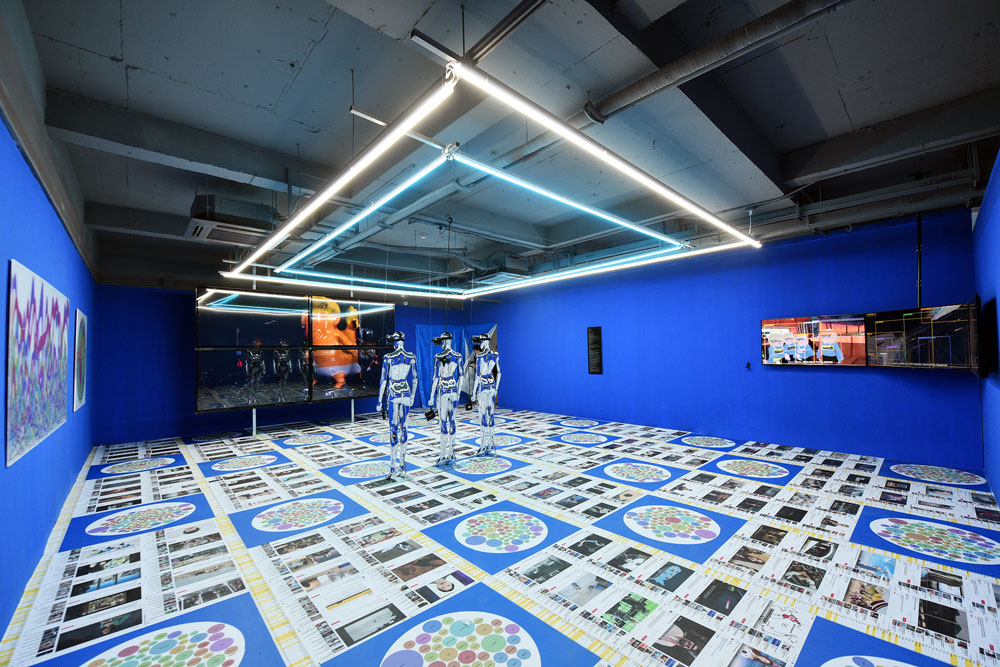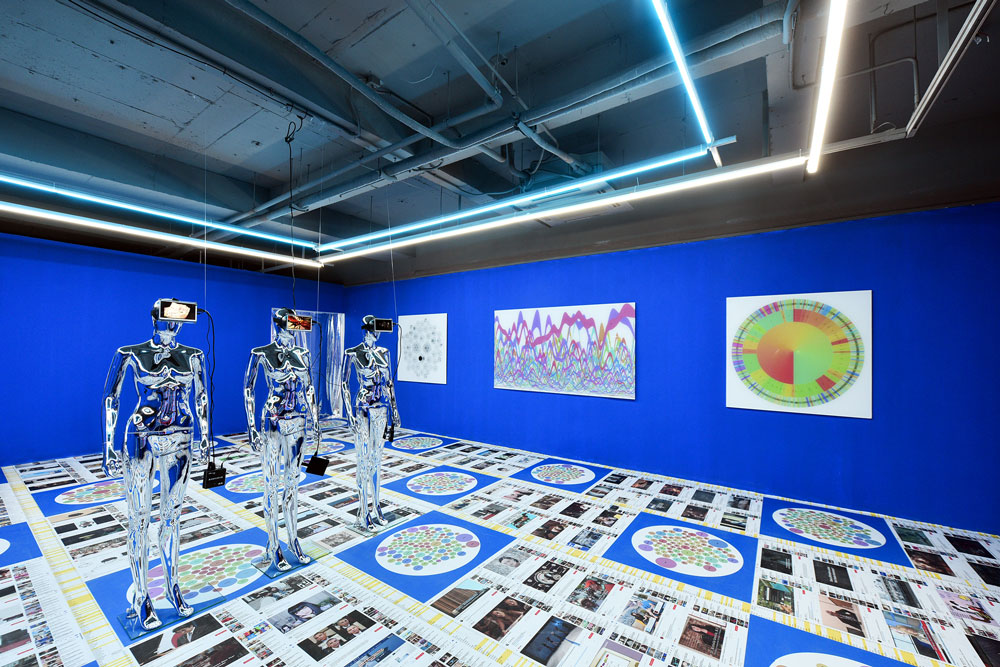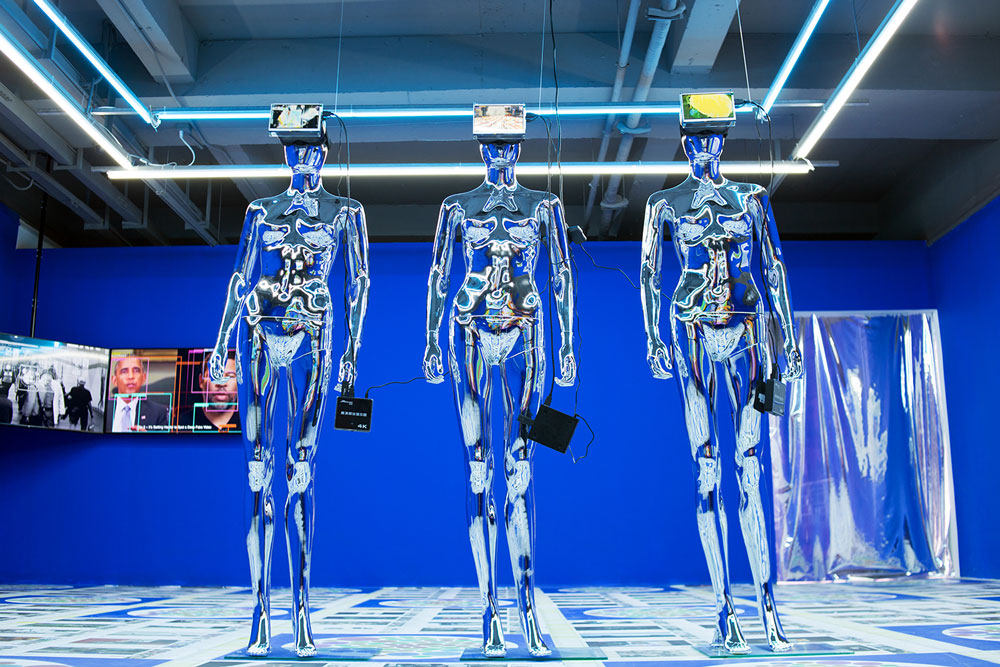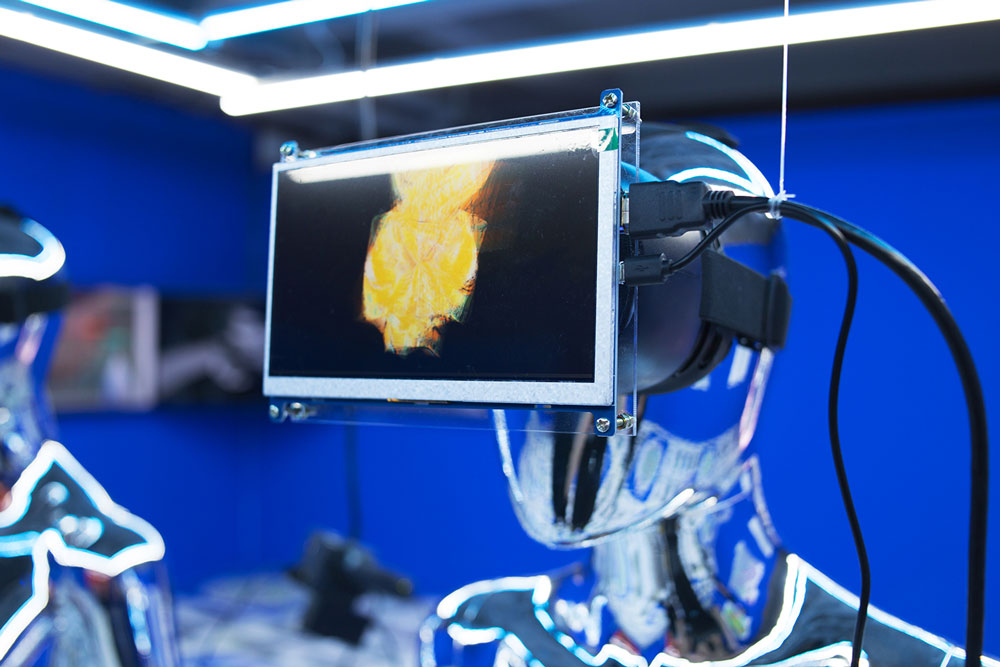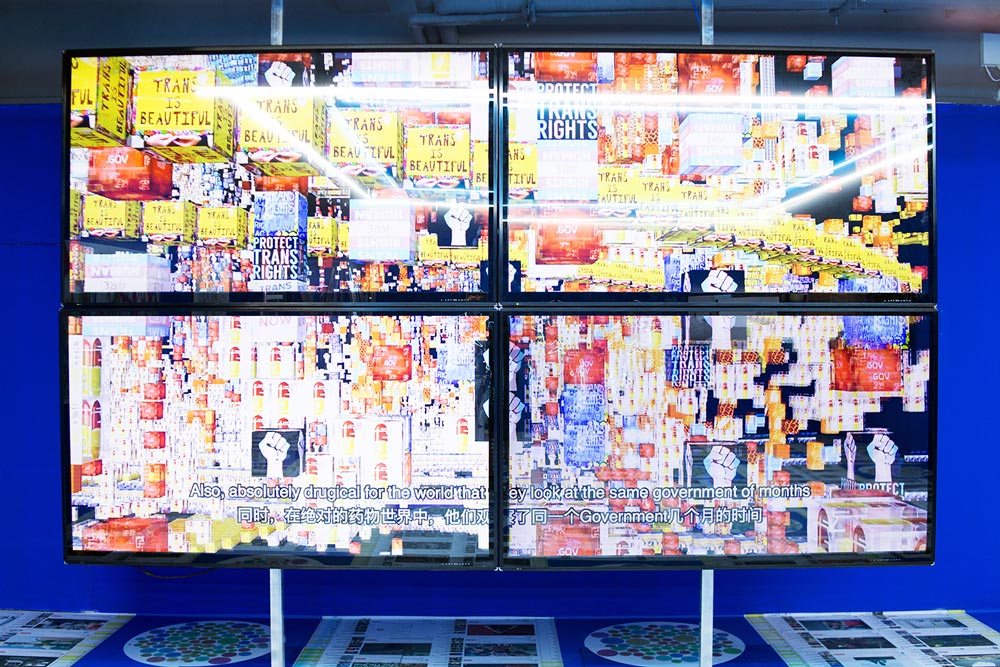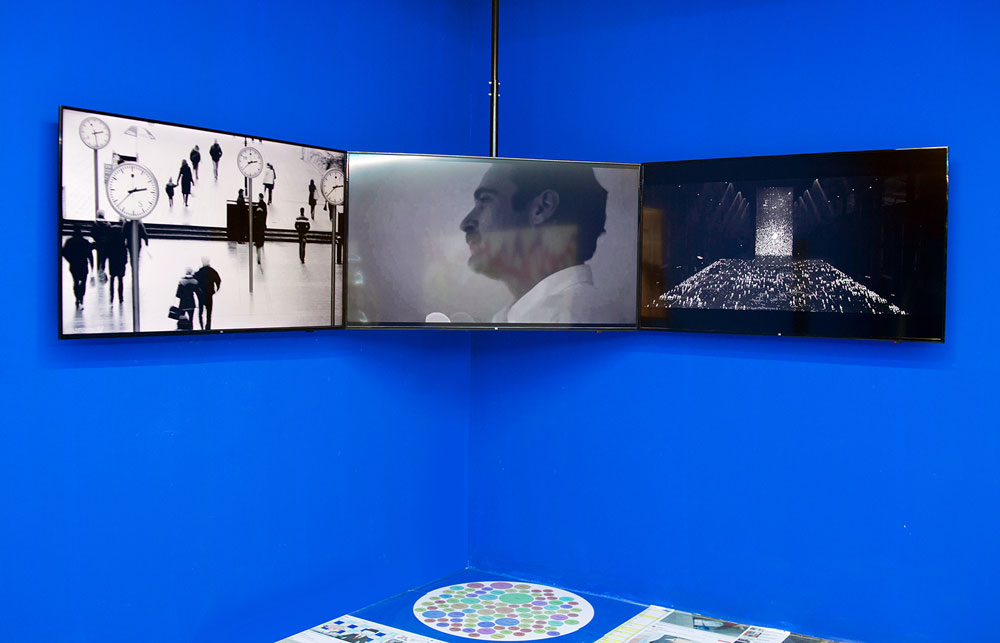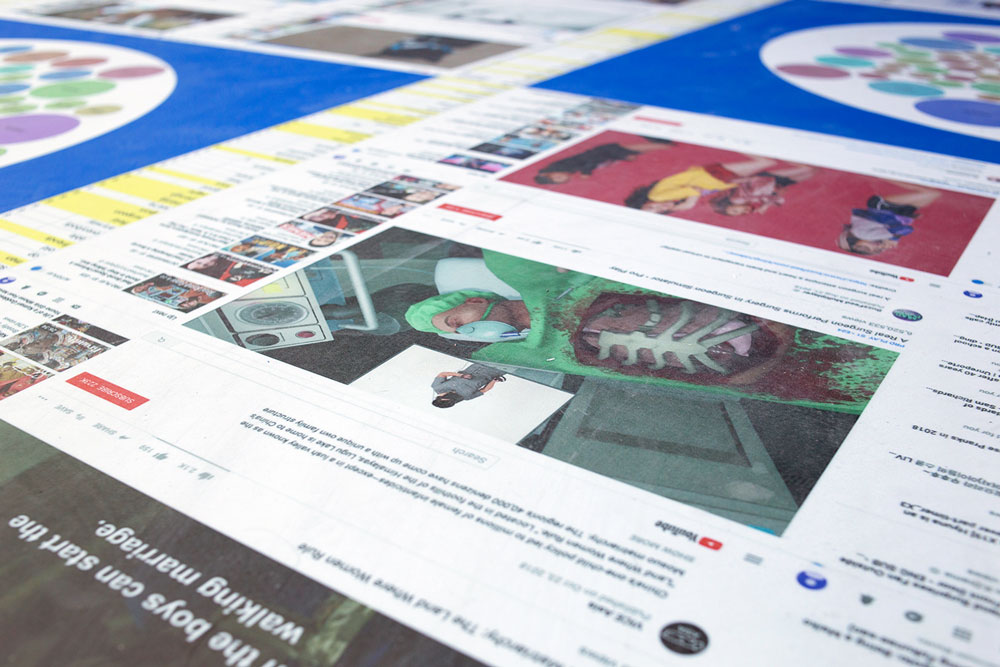A Woman with the Technology
2019
Archive, data analysis, three-channel video (18 min 25 sec), AI Chatbot, Animated video based on AI-generated script (9 min 53 sec), VR headset, chrome silver mannequin, various-size LED screens
Update: "A Woman with the Technology (II)" NFT is now on Foundation:
https://foundation.app/@ziyang_wu_art/a-woman-with-the-technology-ii-44695
The project examines how the Internet algorithm personalizes an individual’s online experience and create the “Filter Bubble” (a situation in which an Internet user encounters only information and opinions that conform to and reinforce their own beliefs), in the form of social practice, archive, artificial intelligence (AI) generated simulation and new media installations.
“The initial praise of the Internet’s (individual) freedoms and (democratic) possibilities has given way to critique of its negative aspects: surveillance, narcissism, collective loneliness, self-tracking, the filter bubble, algorithmic regulation – to say nothing of dangerous side effects such as hyper attention, power browsing, addiction to instant gratification, and ‘fear of missing out’ (FOMO)” – from Waste - A New Media Primer, by Roberto Simanowski published by Matthes & Seitz Berlin in 2017.
Part 1 – Social practice/Daily recording
A series of keywords that are closely related to my daily focus are selected and used as initial input on various media platforms such as Instagram, Facebook, and YouTube. The keywords include censorship, surveillance, alienation, absurdity, Neo colonialism, post truth, trade war, Asian experience, 5G, artificial intelligence, mixed reality, k-pop, identity, among others, which basically represent the individual existence of myself. I log in to these media every day, and give likes, leave comments on the posts/videos I’m interested in. The daily searching experiences are screen-recorded and organized.
Length: 3 months
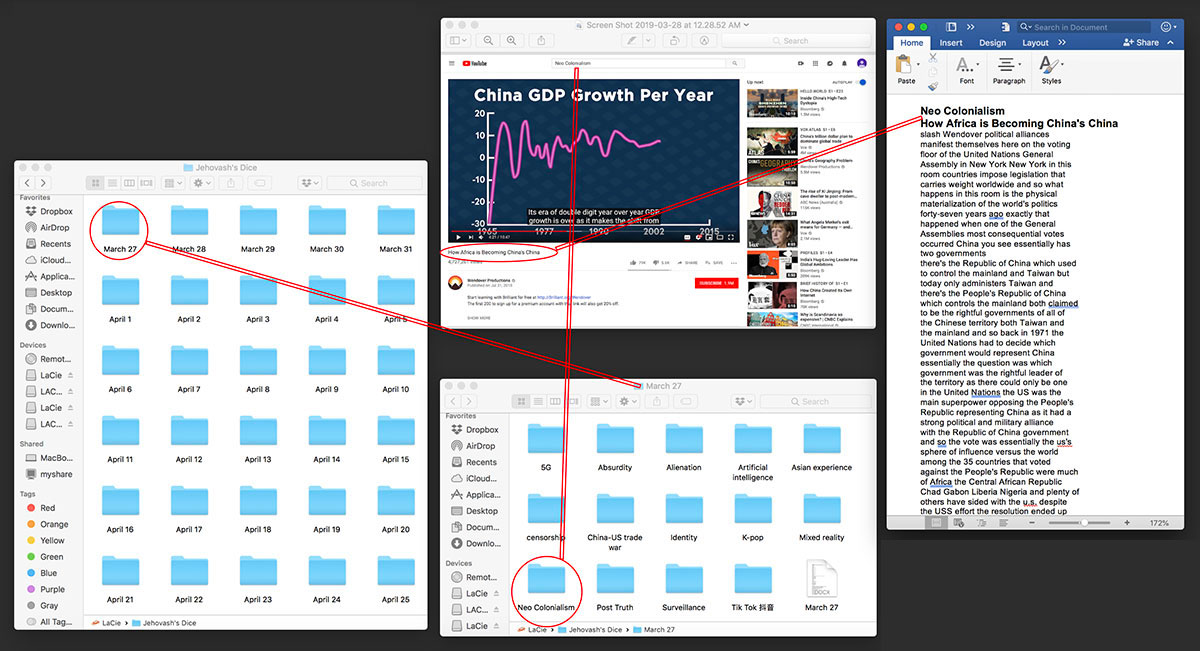 Part 2 – Archives
Part 2 – Archives
The archives present how the Internet algorithm (largely based on user’s interest, recency and relationship) affects the frequency changes of the keywords and their related data and images in the form of sketches, diagrams and Excel forms. It also includes the longitudinal and horizontal comparison between the early and the late stage on different media platforms.
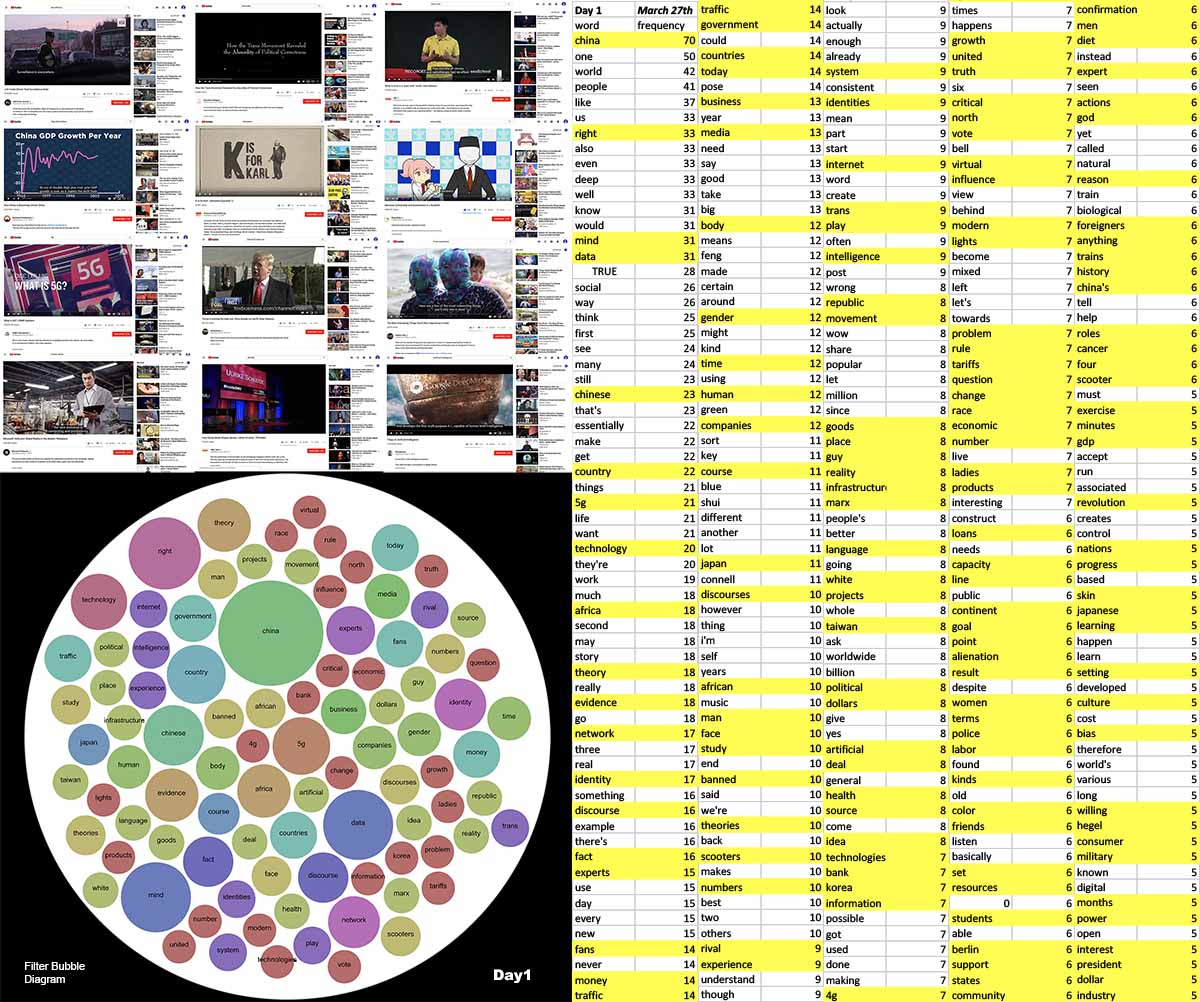
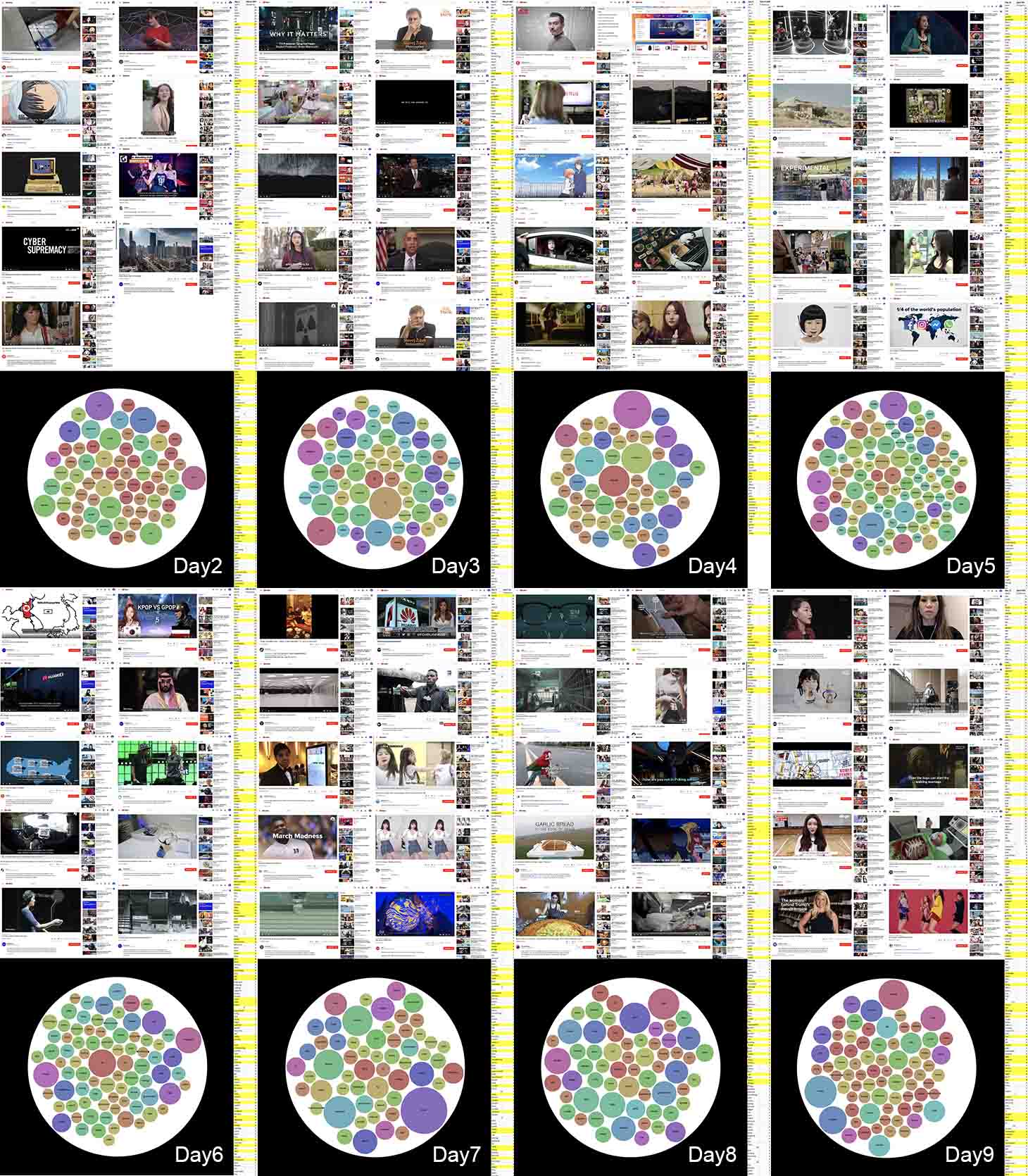 Part 3 – Three-channel video
Part 3 – Three-channel video
A three-channel video showing all the clips that mention the top 50 keywords and/or sentences that include the keywords over the period of three-month of social practice and archive. Additionally, I use the image detection (dense caption) to visually present how the AI/Internet algorithm sees in these videos and how it creates the “filter bubbles”.
18 min., 25 sec
Three-Channel Color Digital Animated Video with Sound
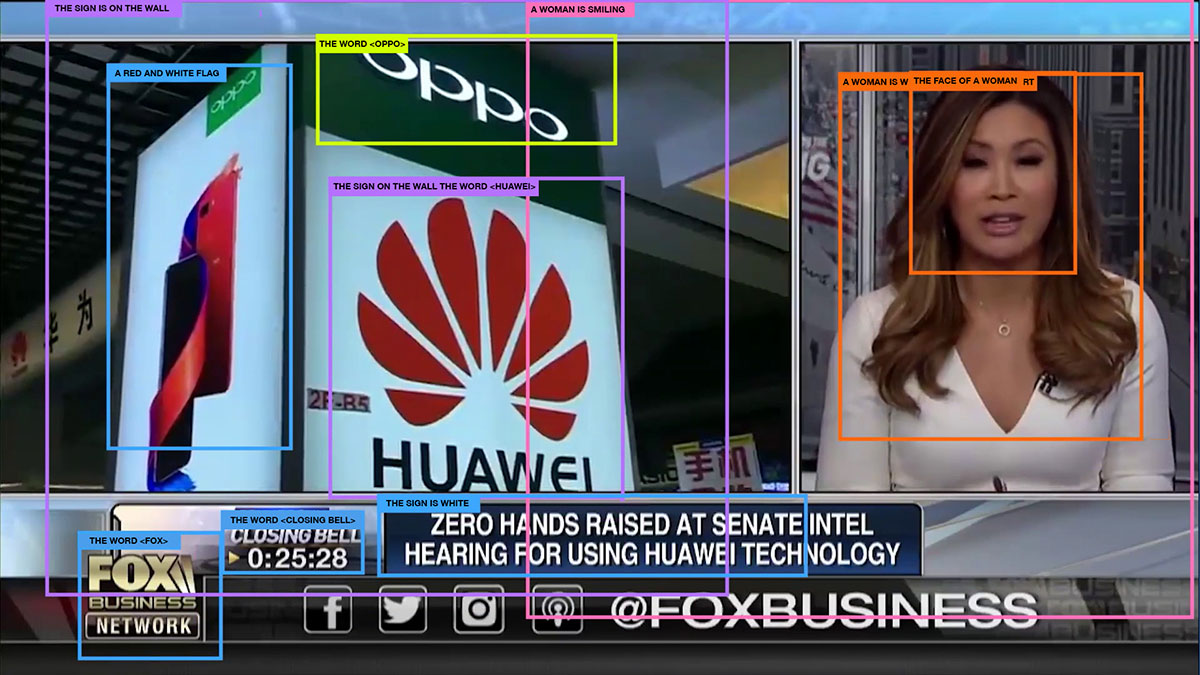 Part 4 – Animated video based on an AI-generated script.
Part 4 – Animated video based on an AI-generated script.
The data that were used to train the AI include all the captions, subtitles (or auto-generated subtitles from YouTube) from the 3 months collecting, as well as all the textual information from the image detection (dense caption). In this way, I was able to cover all the aspects of the information I collected (both textual and visual). After the AI Chatbot was trained, I Googled “How to write a film script”? It listed a series of questions that needed to be asked in order to write “a successful script”. I asked the AI Chatbot all the listed questions to create the film script.
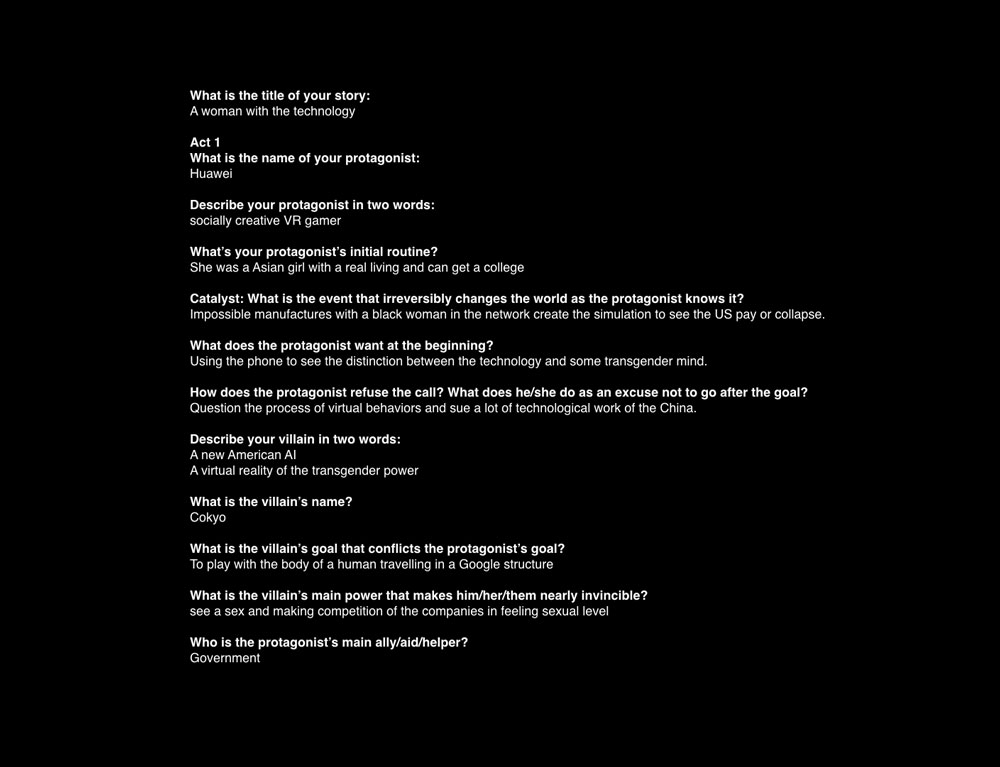
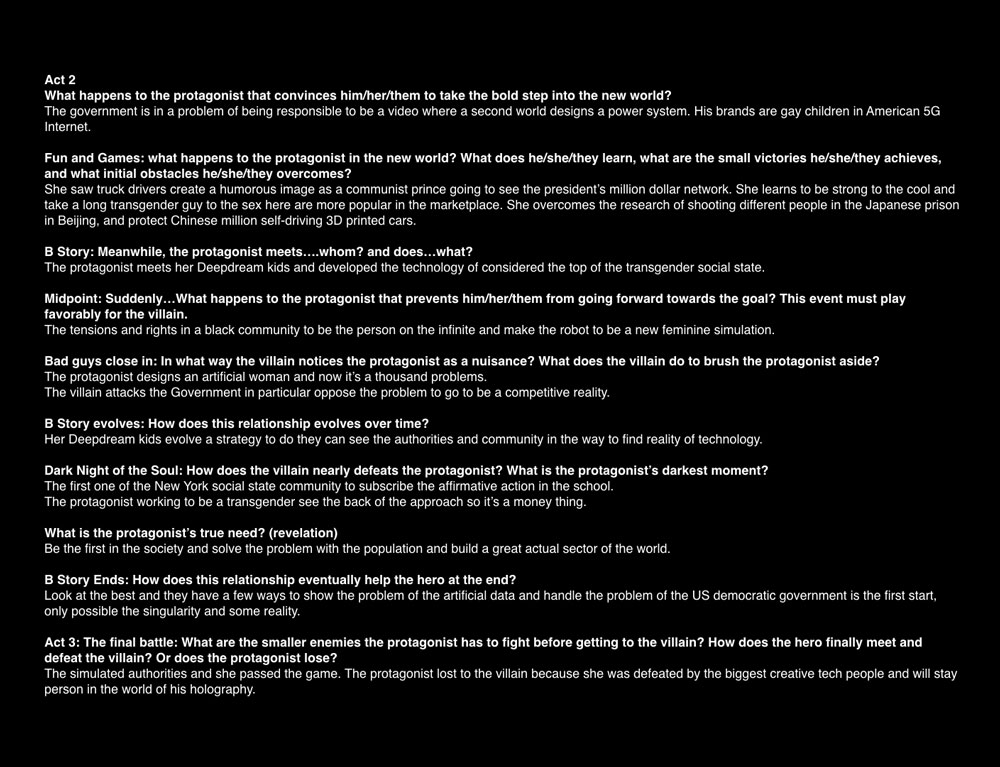
Then I created the animated video based on the AI-generated script
9 min., 54 sec
Color Digital Animated Video with Sound
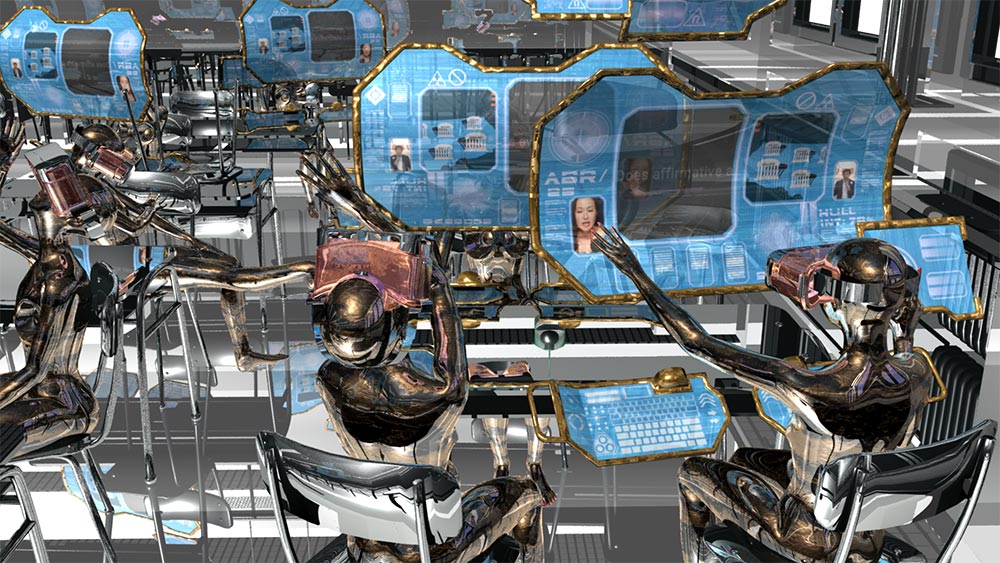
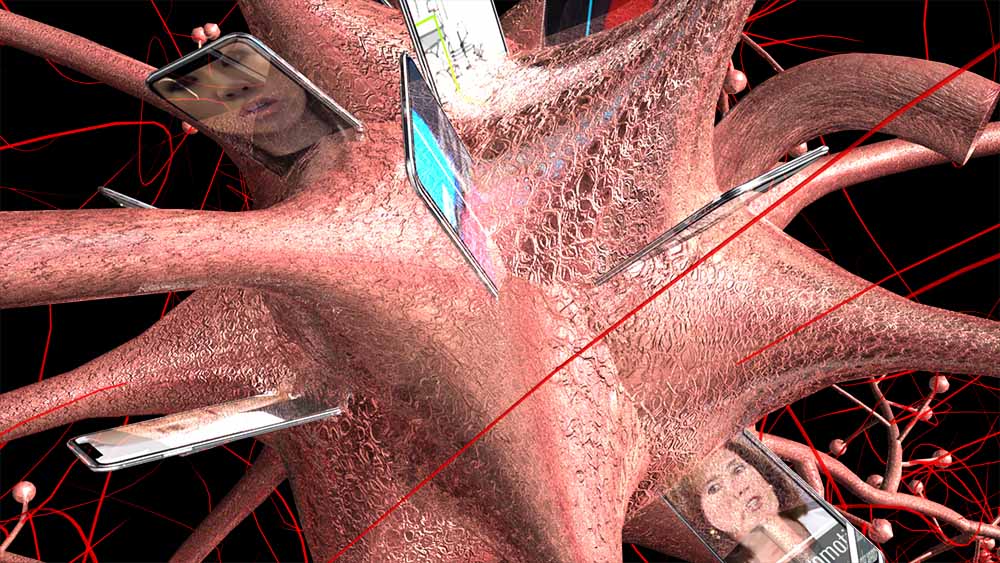
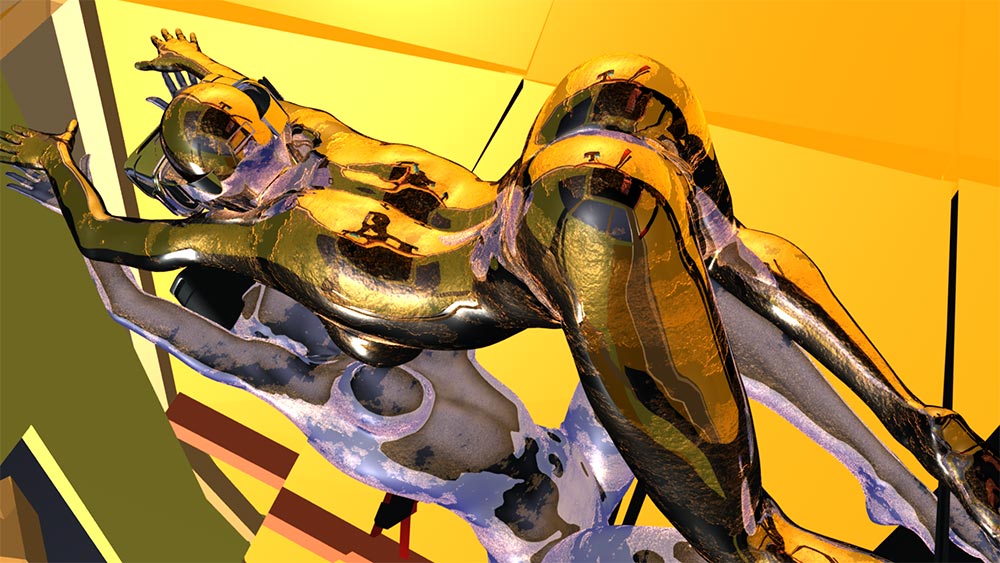
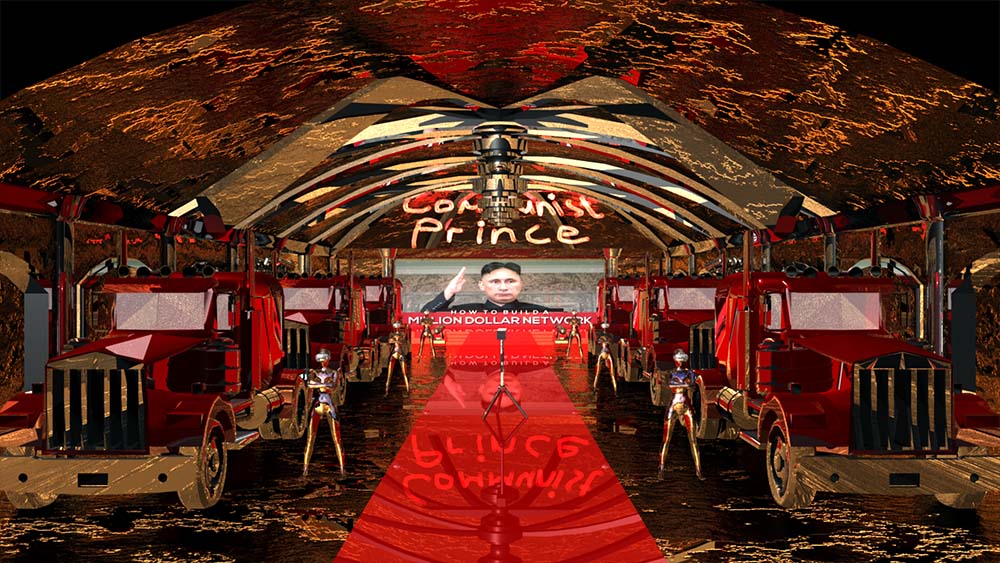
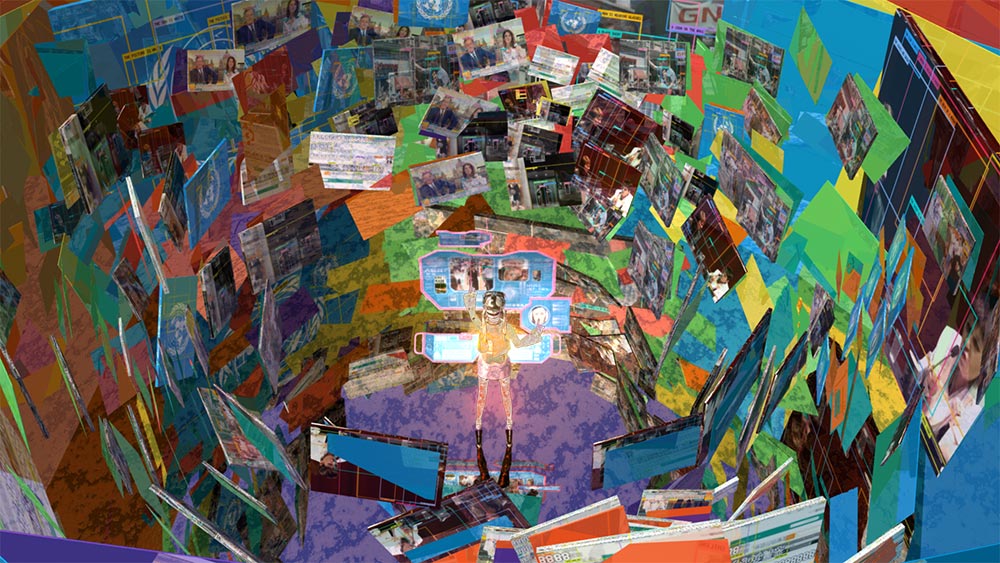
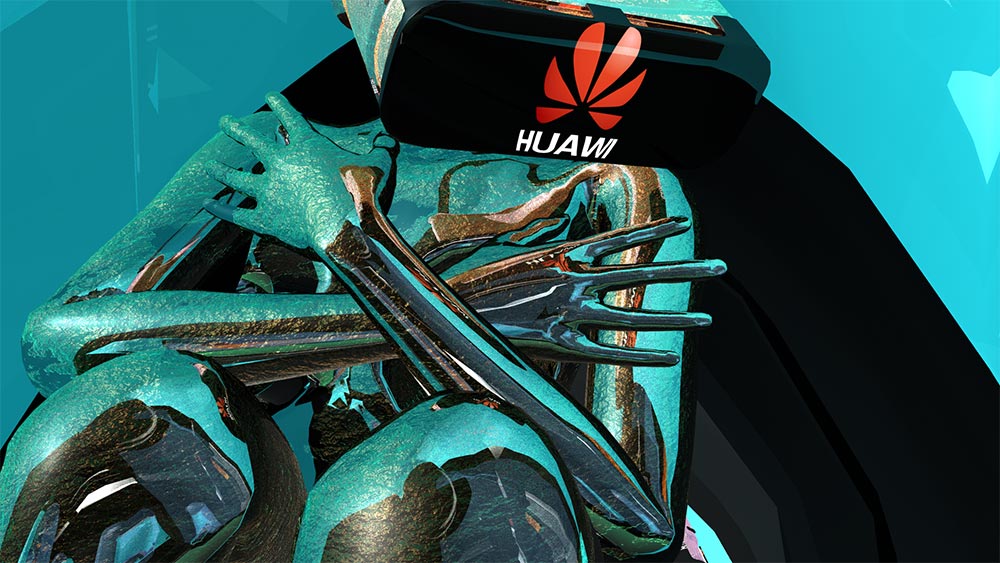
Installation Views at Artron Art Center in Shenzhen, China (below)
